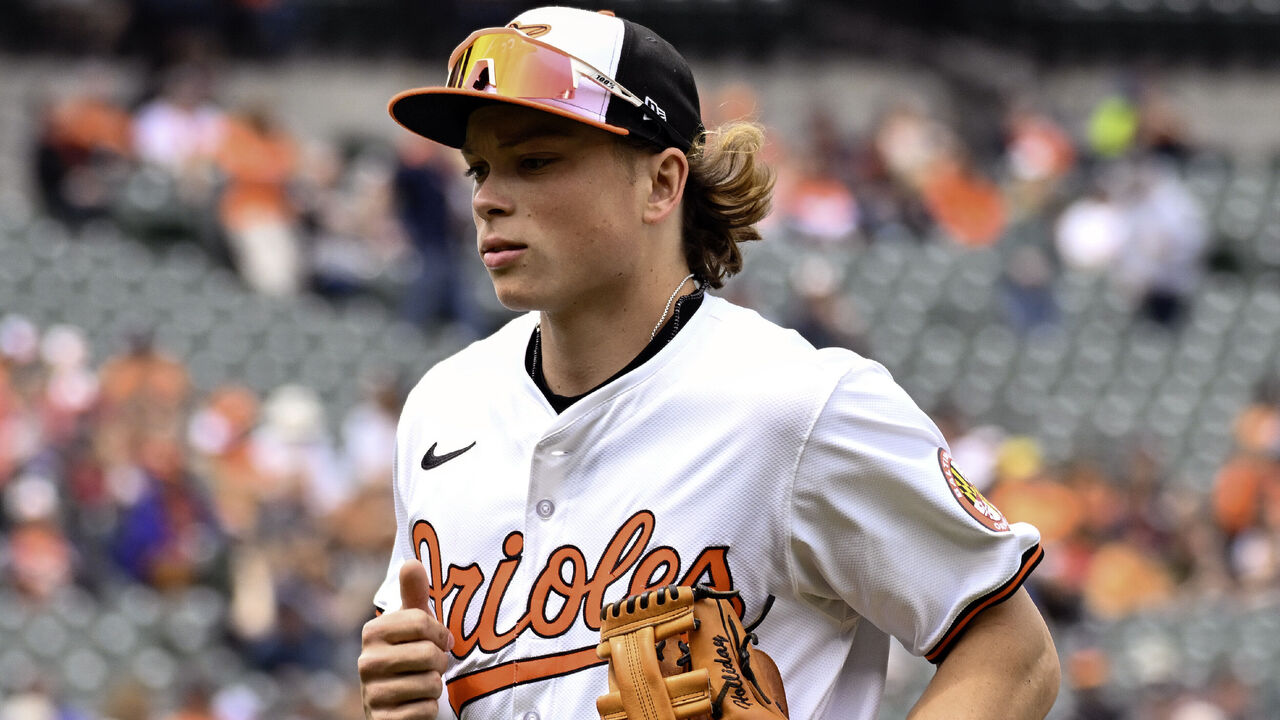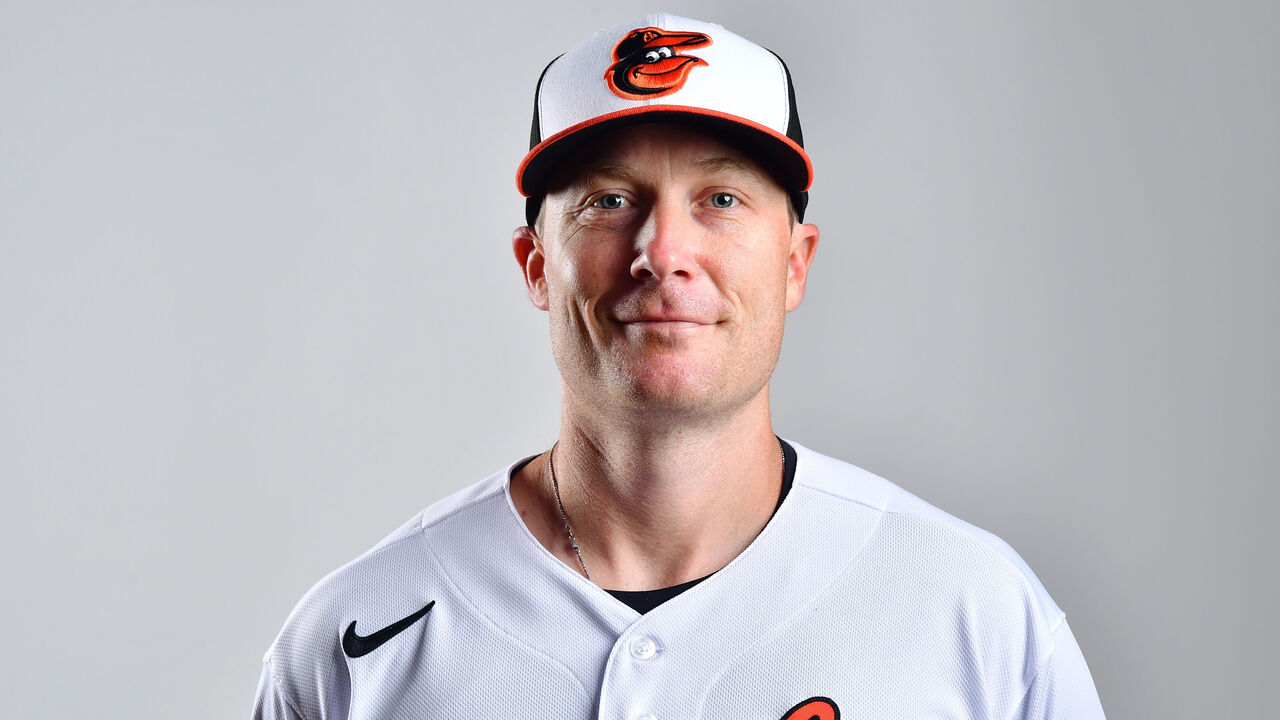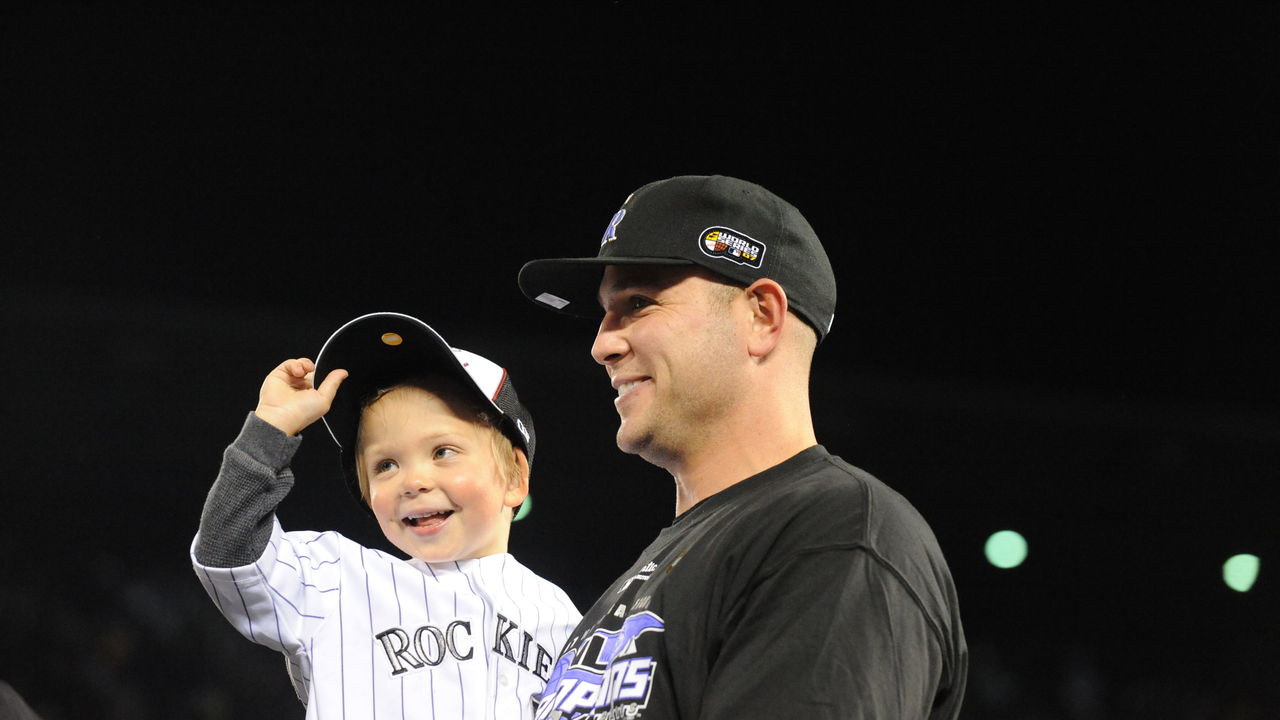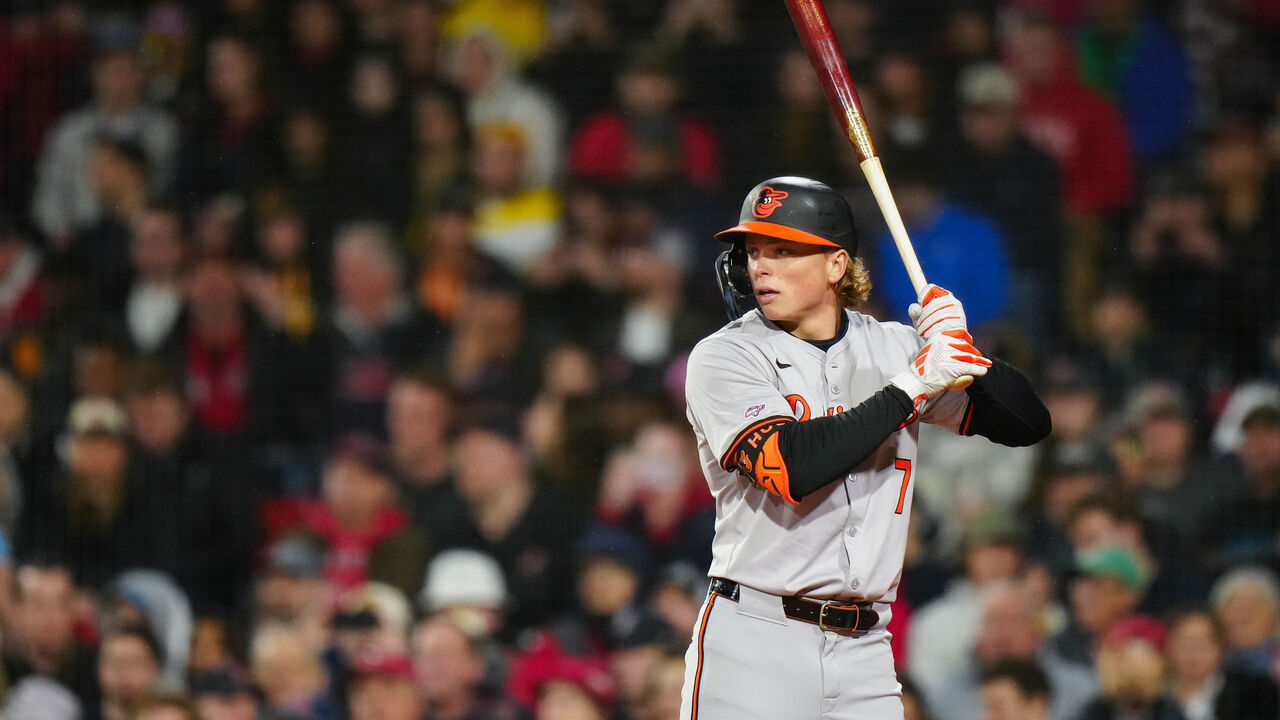How the Orioles got top prospect Jackson Holliday back on track
Soon after Jackson Holliday reached the major leagues earlier this season, it was clear there was a problem.
On April 26, the club returned to Baltimore after a series in Anaheim, following another flurry of Holliday strikeouts. The 20-year-old uber prospect was called into the manager's office; he was being sent down.
The demotion was a rare setback for the Orioles, and for one of their top prospects.
As the Orioles rose meteorically from a White Sox-like state a few years ago to today's powerhouse status, they've done so largely through scouting and player development successes. They haven't endured many stumbles in transitioning prospects into big leaguers.

Catcher Adley Rutschman, a former Baseball America No. 1 overall prospect, was a star-level player upon arrival. Gunnar Henderson's transition has been seamless since his 2022 debut: No. 1 prospect, Rookie of the Year honors in 2023, and one of the best players in baseball in 2024.
Holliday's story is different - at least the initial chapter.
Yes, Holliday was younger when he debuted, 20 years and 128 days old on April 10, so it's not surprising there were some struggles.
But Holliday had one specific weakness, one fatal flaw in surviving at the major-league level that had to be addressed.
"I was missing fastballs up," Holliday told theScore. "If you're underneath it, you have no chance."
Consider this April 16 swing and miss under an elevated Chris Paddack fastball for a strikeout:
And another swing and miss under a fastball, this time from Brock Stewart, the following day:
In his first two weeks in the majors, Holliday saw 73 fastballs, swung 32 times, whiffed 19 times, and produced only one hit on those swings.
That's a 59% whiff-per-swing rate against fastballs. The MLB average whiff rate is 21.7% against four-seamers and 13.8% against two-seamers.
While it was a small sample, it was alarming. And opponents attacked the weakness without mercy, because the scouting feedback loop is nearly instantaneous in today's game.
Fastball velocity is at a record level this season in the majors, sitting at 94.4 mph according to pitch-tracking data. If a batter can't handle velocity in today's game, he won't be in the majors for long.
The Orioles saw they had a problem, and they couldn't afford to wait while competing in the AL East. Holliday had to reset, and they had a plan for how he could do it.
Before Holliday left the major-league clubhouse to return to Triple-A Norfolk, the Orioles' hitting staff shared a plan with him that would get him back to Baltimore.
"When he got up here, it was fastball shape causing swing and miss," Orioles hitting strategist Cody Asche told theScore. "We kind of broke that down for him. We told him, 'You're not going to be a fastball-miss guy, but there are some things in your swing that we see that'll help you have success when you get back to the big leagues and you have to cover 98 (mph).'"
They showed Holliday how his leg kick was too big, and how upright he'd become in his stance.
"It was just a lot of time to get the swing off," Asche said. "If you're having this big, long process, you almost have to pick your leg up before (the pitcher) makes a move. Up here, time gets really condensed. We're fighting for milliseconds of time and space."
They showed Holliday video and images of him at his best, his work from last season, when his leg kick was less demonstrative and when he was quicker to the ball.
They showed him video of his teammate Henderson going through similar issues - and the drills they used to get him back on track.
Asche and his fellow major-league hitting coaches, Matt Borgschulte and Ryan Fuller, put together a PowerPoint file for the minor-league coaches to study, a plan to implement. They showed images contrasting the poor swings with his ideal cuts at the ball. They suggested drill packages to adopt.

There's a physical plan, but there's also something else that's key to an effective reset: psychology.
While the Orioles didn't feel Holliday was succumbing to pressure any more than any other young hitter going through a slump, there's a burden in being a top prospect.
"When I first got up here, it was kind of crazy, with all the cameras and all the media," Holliday said. "(Expectations) are something I've been dealing with ever since I got drafted, but I wasn't trying to place pressure on myself."
It helped that he saw how his father, Matt Holliday, handled slumps - as infrequent as they were during Matt's lengthy career.
Jackson spent countless days in major-league clubhouses as a kid. He was there for his father's last series in 2018 as a then 14-year-old. He saw life went on regardless of on-field struggles or success.
"It was extremely helpful for me to see his on- and off-the-field attitude," Holliday said. "His presence was always the same when he came home, no matter what the outcome of the game was. I tried to take away that it's your job, yes, but once the game is over, you go home and be part of the family."

As Jackson's bat faltered early this season, he recalled what his dad texted him: "Just have fun and do what you've been doing since you were a kid. It's just a game at the end of the day. Go out there and have fun, and smile."
While Holliday owns an even-keeled temperament, and while the Orioles didn't believe his confidence was irreparably damaged by his initial struggles, they wanted to him to leave Baltimore with a particular understanding: He didn't need to destroy Triple-A pitching or improve on his past Triple-A numbers. He simply had to focus on one objective: improve against fastballs.
"We're not concerned about beating Triple-A anymore," Asche said of the message.
This was about beating the fastball.
"He's had every opportunity in the world to add pressure to himself his whole career, and he hasn't done it. We were very comfortable giving him that message, knowing he's not going to be fazed by this," Asche said of Holliday's demotion. "He's eager to be a contributing member of this team. He showed up at spring training with that mindset: 'I want to be part of this team.' He took the news in stride and went to work."
With that message, and with the PowerPoint plan sent to Norfolk, Holliday went down and rebooted.
What helped Holliday accelerate a successful reset went beyond natural talent. He wants to be coached.
Baltimore's been impressed with Holliday's curiosity and desire to get better ever since he was drafted first overall in 2022.
Last spring, I was at the Orioles' minor-league spring complex meeting with Matt Blood, who leads Baltimore's player development efforts.
We were in the cafeteria and Holliday was in line there, studying a TV broadcast. Henderson was batting in a major-league spring contest.

Blood told me: "When Jackson showed up (after the draft), the first meeting we had, we were going through some of our process, and they had Gunnar on the screen. He asked a question: 'What did you do with him? Whatever you did with him is what I want to do.'"
Part of the reset plan was new school.
Foam balls have become important training tools in pro baseball because hitters can practice with full-intent swings free from worry about jamming themselves or mishitting a ball off their shin or ankle.
After he returned to Norfolk, Holliday practiced against foam balls before Triple-A games. They were fired out of high-velocity pitching machines, including a special ball designed to have extreme spin, so that it moves upward and above the strike zone.
The Orioles wanted to exaggerate the issue of contacting high fastballs.
"You have to figure out a way," Asche said about hitting elevated 100 mph foam balls with some 40 inches of carry.
The Orioles are on the forefront of player development, with pitch simulators and biomechanical tools that help get players on track. Holliday employed some of those, too.
But one tool that helped Holliday was remarkably old school: the batting tee.
Holliday took swing after swing off an elevated tee before games to flatten out his bat path and have his swing plane better match high fastballs.
"Honestly, it was just getting back to hitting high tee," Holliday said. "One thing my dad always taught me is if you hit off that, you'll find your path. Then challenge yourself with the machine, and hit the foam balls. Just trying to challenge myself at the top of the zone."
While Holliday was gone, he wasn't forgotten in Baltimore. Orioles hitting coaches were watching video of his practice work and games.
Progress was slow at first.
He saw 259 fastballs in May at Triple-A, batting .273 against them.
He batted a whopping .417 against fastballs in June, and .317 in July.
Asche saw Holliday's leg kick get smaller and his swing begin to better match fastballs.
"If you're missing underneath, we'll take swing and miss over the top, over-correcting in a sense," Asche said. "An analogy we use with a lot of guys is over-correcting your miss. If you swerve this way in a car (to the left), you probably have to swerve harder to the right, to get back into center. Eventually, we find that middle ground. That's how we grow."
They saw Holliday begin spraying line drives around Triple-A ballparks, and saw his exit velocities inch up.
"I felt like I got back to what I was doing (before)," Holliday said. "Covering heaters up, having good direction."
Holliday was back in a good place and the Orioles would soon need him.
On July 31, a day after the trade deadline, Jordan Westburg, another young Orioles breakout player, suffered a broken hand.
Holliday was recalled the same day, suddenly thrust into the everyday second base job.
He hit his first major-league home run in his first game back: a grand slam.
JACKSON HOLLIDAY!
— MLB (@MLB) July 31, 2024
His first big league homer is a grand slam! pic.twitter.com/UhYSrT2MiQ
Entering play Wednesday, in his first six games since his return, pitchers have thrown Holliday 42 fastballs, he's swung at 25, and whiffed only six times.
Five of his six hits against fastballs this season have come since his return.
He even handled a 100-mph fastball from star Guardians closer Emmanuel Clase over the weekend:
Left-handed batters were hitting .097 off Emmanuel Clase before Jackson Holliday ripped this 100.0 mph cutter from Clase for a single.
— Jacob Calvin Meyer (@jcalvinmeyer) August 3, 2024
At 100.1 mph, Holliday's single was the 7th-hardest base-hit off off Clase this season. pic.twitter.com/cPu0yIlA7q
He recorded three straight multi-hit games in the series against first-place Cleveland.
Holliday homered again Tuesday in Toronto, his third bomb in six games since his recall - and the first three of his career.
"We see a lot of similarities to Gunnar," Asche said. "Is Jacks going to be a 30-homer guy? Maybe."
Only time will tell whether all the progress has staying power, but Holliday feels like he's in a better place.
"The second time around, I've been able to be more relaxed, more present, and more comfortable," he said.
With Westburg injured, and with Baltimore in a tight race for the AL East, Holliday's reset isn't just a development project for the club; it needs him to win right now.
"I think this is a big chance for him, and we're going to give him some time," Orioles general manager Mike Elias told reporters following Holliday's return. "This is a time period where he's got some runway in front of him because of the vacancy that we have at second base."
While the Orioles added external help at the trade deadline, it's possible their most impactful addition could come from within: version 2.0 of another No. 1 prospect.
Travis Sawchik is theScore's senior baseball writer.
HEADLINES
- Giddey ties career-high with 5 triples to lead Bulls past Cavaliers
- Faulk scores only goal, Hofer makes 24 saves to help Blues blank Jets
- TNF bets: Seahawks host Rams for high-stakes NFC West clash
- Bears exploring potential stadium sites in Northwest Indiana
- Rookie Ward hopes to be involved in Titans' coaching search